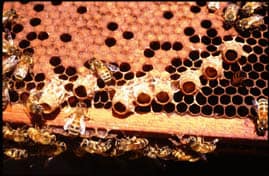I hope to have a co-op meeting the end of January and my one and only bee workshop this year will be March 2nd & 3rd, 2019. See syllabus below:
Science-Based Art of Alaska, LLC
Instructor: Dawn Cogan
To register, email Dawn at sciencebasedart@yahoo.com
When:
March 2nd and 3rd 2019
1-5 PM each day for a total of 8 hours
Where:
Monroe Catholic School 615 Monroe Street, Fairbanks, AK 99701
Cost: $150.00 per family
Syllabus:
Students will receive a book with hand-outs to keep. Door prizes include brand new beekeeping tools.
• Biology and races of honeybees
• Members of the hive and their duties
• Where can I get bee equipment? Should I get new, used or build my own?
• Getting equipment ready for the arrival of bees
Hands-on Project: Construct a beehive in class- What is beekeeping? How much honey will I get? How much will this all cost me?
• Biology and races of honeybees
• Members of the hive and their duties
• Where can I get bee equipment? Should I get new, used or build my own?
• Getting equipment ready for the arrival of bees
• Insulation, feeding bees properly
• What to do when the bees arrive
• Is my queen marked? (queen marking tool)
• Management of honeybee colonies in Alaska, The Beekeeper's Calendar
• Running 2-Queen Hives
• Swarming and how to prevent it
• Honeybee diseases
• Extracting your Alaska honey
• What to do at the end of the season/wintering over
• Storing your equipment
• Beeswax candle making
• What to do when the bees arrive
• Is my queen marked? (queen marking tool)
• Management of honeybee colonies in Alaska, The Beekeeper's Calendar
• Running 2-Queen Hives
• Swarming and how to prevent it
• Honeybee diseases
• Extracting your Alaska honey
• What to do at the end of the season/wintering over
• Storing your equipment
• Beeswax candle making






